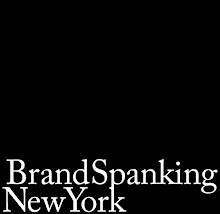I hope this isn’t the case, but it’s my guess that Bono’s new initiative, (RED) — the multi-megabrand co-op which, as the site says, was “Designed to Help Eliminate AIDS in Africa” — was devised with rose-colored lenses obscuring the fickle nature of brands, their audiences, and their life-cycles; and on the next level, overlooking the potential injury to the charitable efforts themselves.
Simply put, brands can get irritating. Brands screw up. Some get good-lucky, others, un-. Once in a while, a brand becomes bigger than life. But all brands age. And most die.
Now, because this brand has so much riding on it, I have to wonder if it’s wise to make a marque out of (read: trivialize, or worse yet, commercialize) a massive philanthropic promise.
Of course (RED) raises awareness for the scourge that is AIDS in Africa. And it’s nice to see global conglomerates kneel to the threat of bad P.R. if they don’t participate, sending what may someday become billions of dollars in relief. At that, I applaud Bono for throwing his weight around to make this all happen. (By the way, don’t you find it sad that it takes a rock-n-roll star, not governments [or hell, average citizens] to make this a reality?)
But I maintain that a multi-brand like (RED) walks on thin ice as a brand every single day. Let’s review the risks:
- Say for argument’s sake that Motorola gets swept up in some giant corporate accounting scandal, or that Apple is exposed for running sweatshops in China. What happens to (RED) then? What happens to one of the other brands, say, Emporio Armani, in the court of public opinion through their association?
- Inversely, what negative equity does GAP inherit if (RED) handles itself with incompetence — or some slimeball somewhere on the money trail from NYC to Ghana is found siphoning cash?
- I know that not every product donating proceeds will be colored red. Nonetheless, remember all the disgusting copycats of the Livestrong bracelet when it launched? How many imitations with ill intent are going to pop up and ruin (RED)’s credibility?
- Shareholders at power-brand Nike — owner of (RED) participant Converse — decide for some reason they no longer wish to be affiliated. Does this whole thing backfire on them, on (RED), on the other participating brands?
- After a few years, it’s found that (RED)’s efforts haven’t worked. Will consumers feel cheated? Will we ever trust another big-name charity again?
The above neglects the mention of what’s inevitable for all brands everywhere: fatigue. (RED) is guaranteed to ride the highs and lows that befall every marque that ever existed, and that means that the work of the Global Fund (the world’s largest fundraiser for AIDS, malaria, and tuberculosis programs) on the African continent is susceptible to rising and falling along with it, at least on a superficial level, which seems a real shame.
Most certainly, if one life is saved, then it’s all worth it. (And there will be thousands saved because of this effort, I'll bet.) That's not to be argued.
But this is a discussion about brand. I just find myself wondering if wrapping this whole thing in rockstar corporate glossy glam won’t force unintended long-term effects on a daring concept that's trying to solve some of the planet's most elusive health problems.
Was there another, perhaps more surreptitious, way to roll out (RED), á la Newman's Own, that might have invited discovery on the part of the consumer? I've always believed that, in the vast majority of cases, hype level has an inverse relationship with brand lifespan, and that helping people uncover an experience (in this case, a cause) without a treasure map engenders audience ownership and, usually, loyalty.
Also, I can’t help thinking that the only people who REALLY care about this are Bono, all the wonderful humanitarians who devote their lives to working for the Global Fund, and the sufferers themselves. In recent years, Corporate America has shown its true colors (pun not hugely intended), which makes me want to consider if this won't someday be seen as another "just-add-water" corporate responsibility program for the Fortune 500.
The above may seem cynical, but because such a noble cause like (RED)'s has been “so heavily branded,” one reserves the right to treat it like any other brand.
And therein lies the problem.

